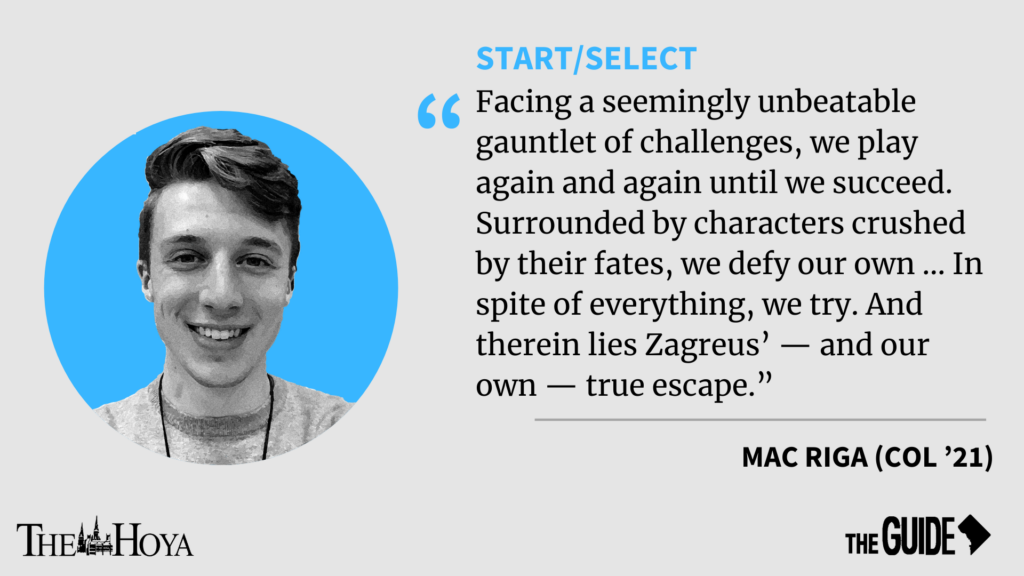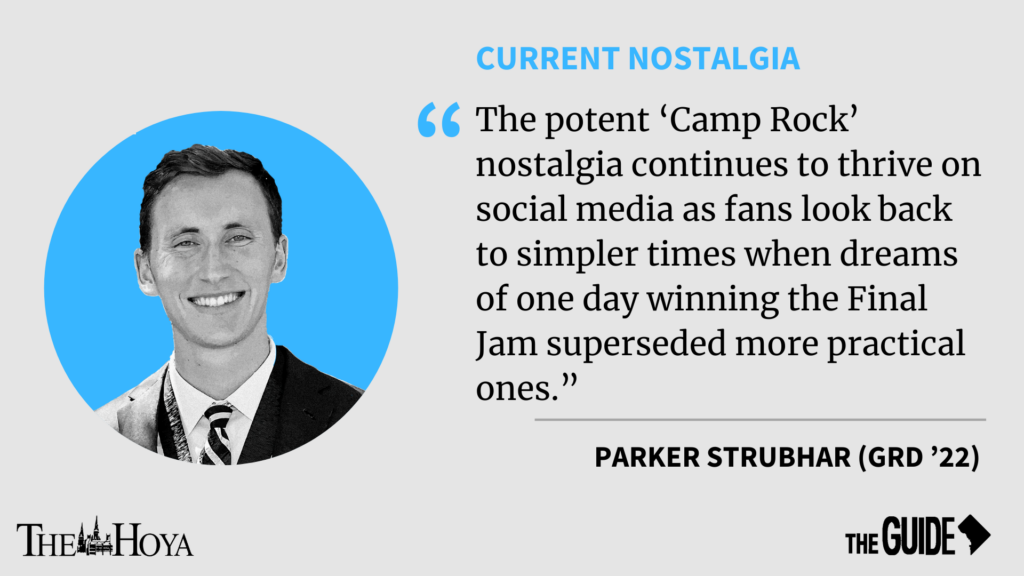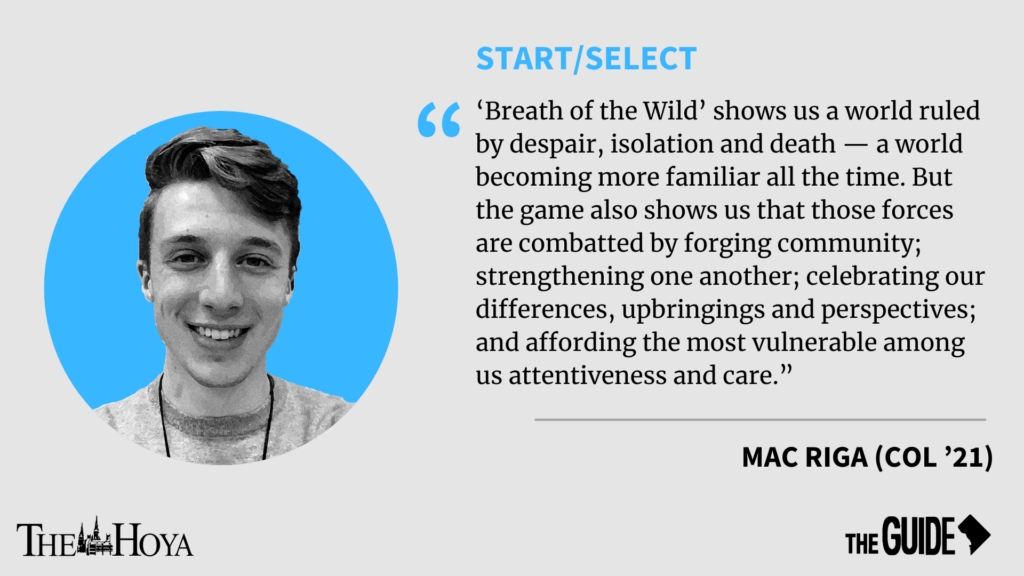The ending is everything.
This is true of many pieces of media, and video games are no exception. The ending is the last thing a consumer is left with, and it will play no small role in affecting their judgment of the work. For a video game, however, especially one in which the player’s choices can affect and even guide the story like Supergiant Games’ 2017 RPG “Pyre,” the importance of the ending is more pronounced.
So it is noteworthy that in “Pyre,” your goal is to return from exile to your home, the Commonwealth, and overthrow your government. A far cry from Mario’s eternal mission to rescue Princess Peach, “Pyre” envisions a happy ending that is inherently tied to political unrest and a change in the status quo.
Now, this move alone is not a novel one on Supergiant’s part. Many games involve a final gamestate brought about by your last great triumph that signals change, even revolution. But Supergiant’s specific tactics and implementation of this ending are what stand out.
The game sees you meeting and befriending a diverse cast of characters for use in the Rites, a magic dodgeball-basketball hybrid match that makes up the core gameplay loop of “Pyre.” Each character is fully realized with distinctive motivations, feelings and relationships, to say nothing of their abilities and styles of gameplay. After winning a few Rites, you will be asked to free one of the exiles in a special Liberation Rite, ensuring their place in the Commonwealth and role in the revolution but losing them permanently as a playable character. It is through these mechanics that “Pyre” expresses its take on revolution as an ultimate goal.
Like many games that give the player agency over major, plot-affecting decisions, “Pyre” boasts multiple endings — about 20,000 of them. But regardless of what choices are made or what gameplay conditions are met, the revolution at the end of “Pyre” always happens.
This is a critical recontextualization of the game’s definition of victory. To “Pyre,” revolution and social change are inevitable, an inexorable next step despite the best efforts of those in power to oppose it. The revolution at the game’s end is your reward for beating the game and the developer’s choice to institute unstoppable progress in the game’s world. The game’s concern is not whether revolution will occur, but how it will occur.
The plan for revolution in “Pyre” focuses on the acquired skills of your ragtag crew, seeing each character contributing as best as they’re able. “Pyre” is a game concerned with the individual within the collective, even if it is the collective that finally brings about revolution. The game sees the value of every character’s contribution to that effort, no matter how unlikely they may seem as revolutionaries. By this design, “Pyre” clearly shows that for change to be accomplished, it requires the efforts, skills and dedication of everyone, regardless of a self-perceived lack of duty or ability to help.
As the game shows the value of each person within a movement, it also places a particular emphasis on the fictional racial diversity of your team by celebrating their differences and drawing on each race’s particular methods of contribution to the revolutionary cause. Races, in this case, include demons, harps, imps, nomads, howlers and more. This being said, it is worth noting — as it is whenever fictional mediums are used to comment on real-world race relations — that such allegories can only go so far.
“Pyre” does a better job than most games in avoiding the irresponsible trope of depicting inherently evil, backward or barbaric races that are only redeemed by characters who reject their heritage. Instead, the game tends to focus on how perceptions of good and evil largely stem from the politics and manipulations of the ruling class, which reinforces its theme on the absolute need for nothing short of revolution. Nevertheless, “Pyre” does toe this line at times, and its efforts in this regard are best taken with a grain of salt.
“Pyre” is an unusually successful vision of revolution not as something to be feared or a well-intentioned movement that spirals out of control, but rather as a healthy, necessary, diverse and inevitable progression. Still, it seems trivial right now to praise a video game for its successful depiction of revolution. Embroiled as we are in a struggle for massive societal change — a struggle that requires energy, activism and our whole attention — holding up a video game or any work of art as some kind of paragon seems hollow.
But the sad fact of the matter is that this struggle is not new; it has been ongoing for centuries. It takes different shapes and it fades in and out of popular attention, but for countless folks, it isn’t something they have the privilege of ignoring. There is more important work to be done right now than making revolution-centric art, but as the attention of the privileged masses slowly starts to turn away from revolution and instead slips back into willful ignorance, the importance of such works grows.
Works like “Pyre” serve to normalize the changes that the struggle for equality necessitates. They help to grow the empathy of the people who consume them to encourage ongoing participation in these struggles, and they serve as a reminder of what’s at stake for people who cannot afford to turn a blind eye to injustice. In a perfect world, art like “Pyre” shouldn’t need to exist. But since we don’t live in a perfect world, we might do well to think about what “Pyre” means for us beyond the comfort of its fictional setting.
Mac Riga is a rising senior in the College. START/SELECT will appear online every other week.






















Fares • Sep 9, 2022 at 3:07 pm
i must say, this…. is a great article, the writing and the analyses of the game and it meaning is really well done, though this is not what first came to mind whe playing and ending the game, i personally love this perspective presented through the texts above.